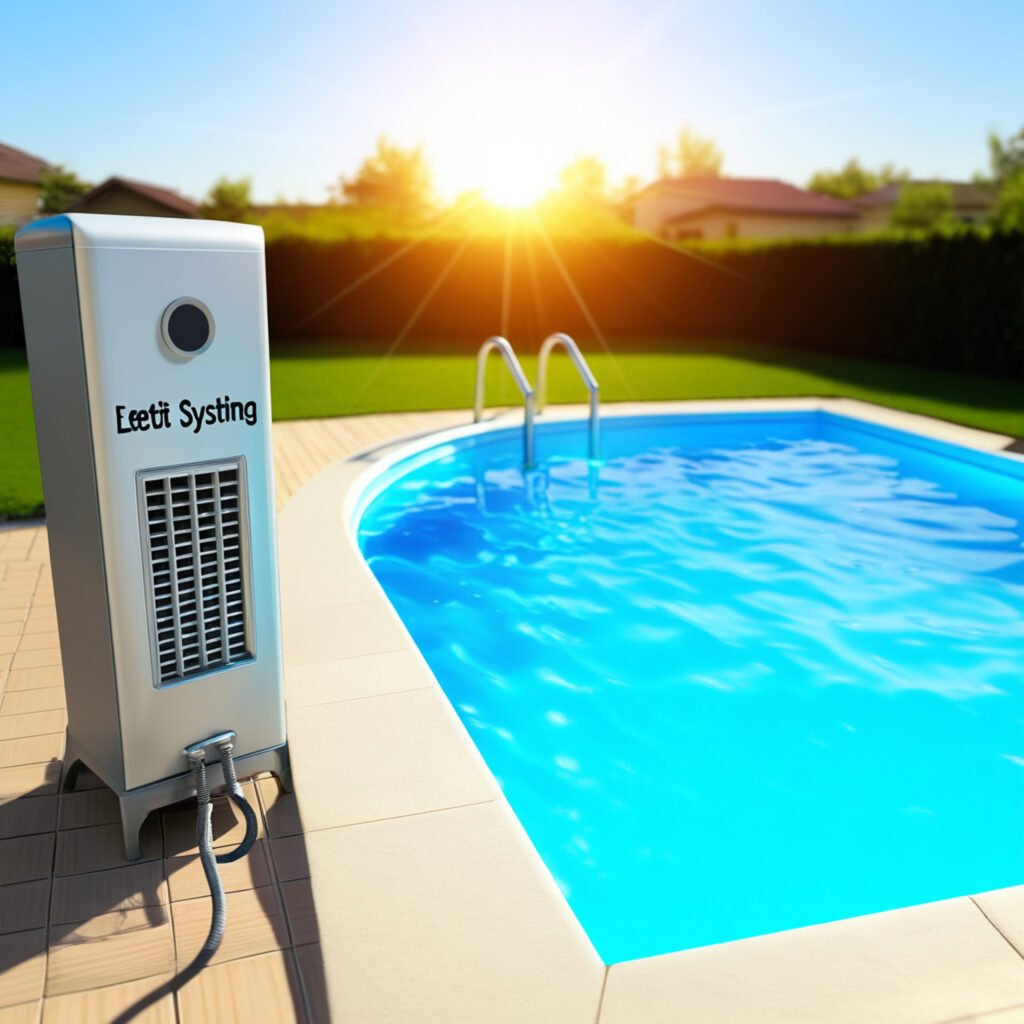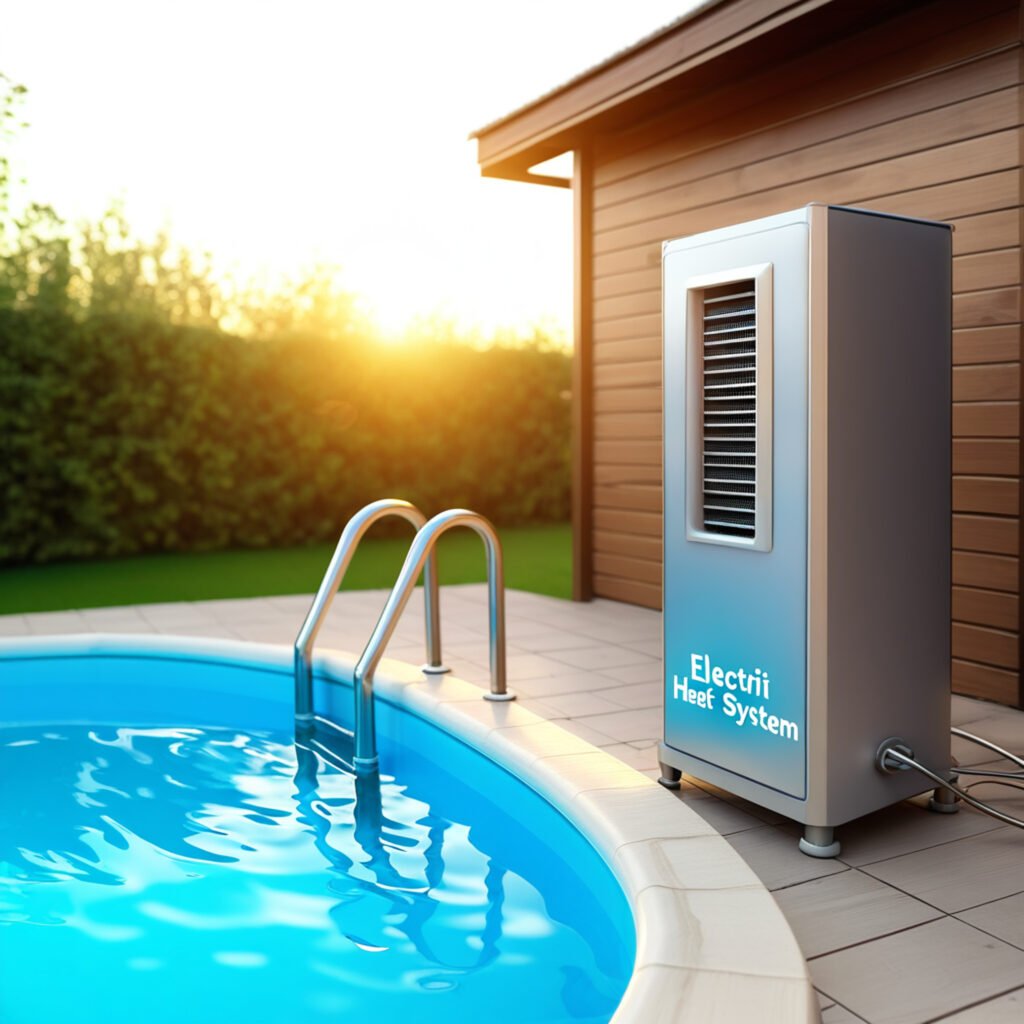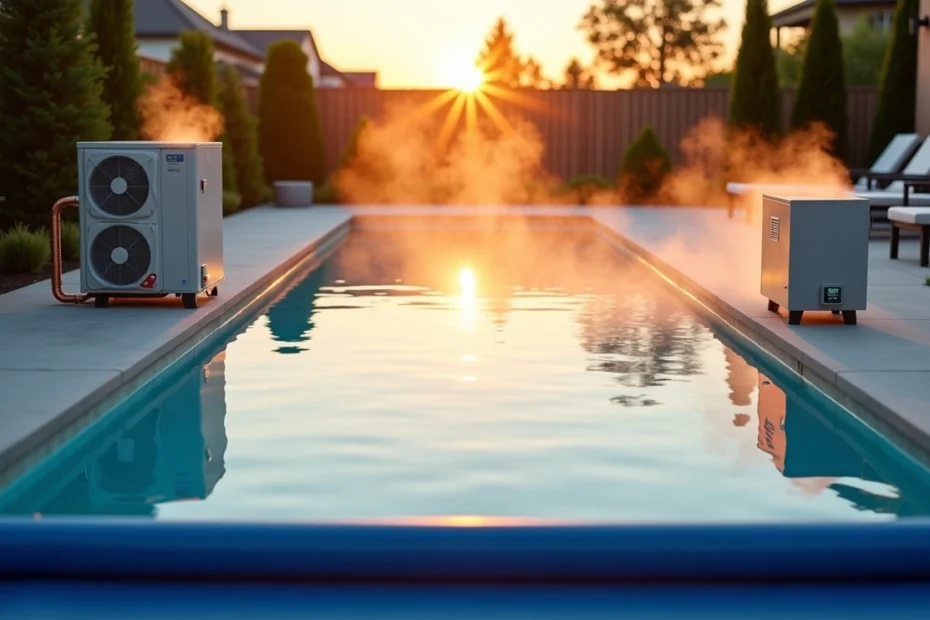Pool owners like us often struggle to find the best way to heat pool water without breaking the bank. Gas pool heaters can warm swimming pools quickly, whatever the weather, which makes them great for occasional swimmers. But electric heat pumps work differently – they pull heat from the air and move it to the pool water. These pumps prove more efficient, especially in moderate climates. The operating costs between these systems show a clear difference. Heat pumps cost less to run in the long term, even though you’ll pay more up front.
Your choice of pool heating system depends on several key factors. You’ll find options from gas and electric heat pumps to solar systems that use the sun’s energy. Your usage patterns and local climate will affect your pool’s heating costs. To name just one example, see how a gas heater might save you money if you swim just occasionally – it heats quickly right when you need it. Fiberglass pools stand out because they’re natural insulators that need less energy to heat. The Endless Pools model uses a smart approach – it needs just one-tenth of the water that traditional pools use, which makes heating substantially more affordable. This piece will help you figure out which heating system saves you money based on how you’ll use your pool.
Understanding Pool Heating Options
Learning about pool heating options and how different systems work helps you make a smart choice that matches what you need.
Gas heaters: How they work and when they shine
Gas pool heaters use propane or natural gas in a combustion chamber with copper coils. Pool water flows through these coils, where burning gas heats it directly before sending it back to your pool. The water heats up faster because gas burns quickly, and temperatures can rise in just a few hours.
These systems work no matter what the air temperature is, which makes them great for cooler climates or seasonal use. They’re perfect for people who don’t use their pools often or just need to heat the pool for special events. The original cost is lower—around USD 1,500—but gas heaters don’t last as long, with an average life of about five years.
Heat pumps: How they operate and ideal conditions
Heat pumps work differently from gas heaters because they move heat instead of creating it. A fan pulls in air from outside and pushes it through an evaporator coil filled with liquid refrigerant. The refrigerant soaks up the heat and turns into a gas. A compressor then squeezes this gas to increase its heat. The hot gas runs through a heat exchanger that warms up the pool water as it passes through.
These pumps work best when it’s warmer than 45-50°F outside. So they’re most effective in warm climates where people keep taking them. They might heat more slowly than gas systems, but once the water is warm, they keep the temperature steady without much effort.
Key differences in energy source and efficiency
The biggest difference between these systems is how they use energy and how well they work. Heat pumps are impressive with coefficient of performance (COP) ratings between 3.0 and 7.0, which means they’re 300-700% efficient. For each unit of electricity they use, they give back 3-7 units of heat.
Gas heaters run at 80-85% thermal efficiency. On top of that, running costs are a big deal as it means that gas heaters can cost USD 300-500 monthly, while heat pumps usually cost USD 50-100.
Cost Comparison: Heat Pumps vs Gas Heaters

The financial equation of pool heating options goes well beyond the upfront price tag. A complete cost picture helps determine which system provides better value over time.
Initial installation costs
Gas heaters cost between $1,500 $5,000, which is less expensive than heat pumps at $2,000 to $7,500. The installation adds $500 to $1,500 to a gas heater’s cost, but this number can increase by $2,000 if you need a new gas line. Heat pump installation costs $500 to $2,500 and needs proper electrical circuits with strategic placement to maximize airflow.
Monthly operating expenses
These systems show dramatic differences in monthly costs. Gas heaters burn through fuel quickly, which leads to operating costs of $200 to $500 per month. Heat pumps employ electricity more efficiently and cost only $50 to $150 monthly [102]. Running a heat pump at 85°F year-round can save you $400 annually.
Maintenance and repair costs
Gas heaters need frequent servicing and come with higher repair costs. Professional maintenance visits cost $100 to $200, and repairs average $150 to $750. Heat pump repairs cost between $200 to $1,200 but happen less often because they have simpler combustion-free operation.
Lifespan and replacement frequency
Note that gas heaters last only 5 to 10 years because of their harsh combustion process and chemical components. Heat pumps offer a much longer service life of 10 to 20+ years with proper maintenance. You would need to replace a gas heater twice as often as a heat pump over two decades, which magnifies the long-term cost difference.
Heat pumps may cost more upfront, but their longer lifespan and lower monthly operating costs make them the smarter choice for regular pool users in suitable climates.
Which Heater Saves You More in the Long Run?
Pool heating costs go way beyond the purchase price. You need to analyze several significant factors to figure out which system will save you more money in the long run.
Climate and regional energy prices
Location makes a big difference in heating efficiency. Heat pumps work best in warmer climates where temperatures stay above 50°F. Homeowners in southern regions like Arizona or Florida get the most out of heat pumps’ efficiency. Gas heaters prove more effective in colder northern climates. Energy costs vary by region too – homes with natural gas typically save about $390 yearly compared to those using cold climate heat pumps.
Usage patterns and swim frequency
Your swimming frequency determines the ideal heater choice. Heat pumps offer lower operating costs ($75-$200 monthly) that benefit regular swimmers. Gas heaters work better for occasional users who need quick temperature boosts, despite higher monthly costs of $150-$350.
Pool size and insulation factors
The pool’s size significantly affects energy consumption. Pool covers make a huge difference – they can reduce heating costs by 50-70%. Evaporation causes the biggest energy loss, which can be effectively.
Real-world case studies and savings examples
The numbers tell the story clearly. A college saved about $25,000 yearly on electric costs by installing thermal pool covers. Energy analysis shows that replacing electric resistance heating with a heat pump (COP of 4.0) saves approximately $23,239 per year.
Tips to Maximize Heating Efficiency and Savings

Your pool heating system needs more than just the right equipment to work well. These smart strategies will help you save money all swimming season long.
Use a pool cover to reduce heat loss
Heat loss through evaporation is a big deal as it means that 95% of your pool’s heat escapes this way. A pool cover makes a huge difference – it cuts heat loss by up to 80% and can reduce your heating costs by 50-70%. The benefits don’t stop there. You’ll use 35-60% fewer chemicals and need 30-50% less makeup water.
Install windbreaks or enclosures
Wind can wreak havoc on your heating efficiency. Even a mild 7mph breeze drives up energy use by 300%. Pool enclosures create a natural greenhouse effect that warms the water and keeps temperatures higher longer. These protective structures act as thermal barriers that will give a major boost to your heating budget.
Optimize heater settings with smart controls
Small temperature changes can impact your wallet. Each degree increase above 1°F adds 10-30% to your costs. Smart automation systems let you manage your pool remotely to keep perfect temperature settings. The sweet spot is 78-80°F for active swimming and 82-84°F when you just want to relax.
Regular maintenance for peak performance
Your system needs routine care to run at its best. Keep those filters clean, check for leaks, and make sure everything works right. Annual professional inspections are worth the cost – they improve efficiency and help your equipment last longer.
Conclusion
Your choice between a heat pump and a gas heater depends on your specific needs. Heat pumps are a better long-term investment for regular pool users in moderate climates, even with their higher upfront costs. These pumps run at amazing efficiency ratings of 300-700%, which means monthly costs of just $50-150 compared to $200-500 for gas heaters. Heat pumps also last 10-20+ years, while you’ll need to replace gas heaters every 5-10 years.
Gas heaters can be the right choice in some cases. People living in colder areas or those who don’t swim often might prefer gas heaters because they warm pools quickly in any temperature. Your climate, how often you swim, and local energy costs should guide this decision.
You can cut costs dramatically with the right efficiency measures, whatever heating system you pick. Pool covers are your best bet here – they can slash heating costs by 50-70% by stopping evaporation. Windbreaks, smart controls, and regular maintenance also help save money significantly.
The best choice weighs your upfront investment against running costs based on your situation. Heat pumps cost more to install, but their lower monthly costs and longer life make them more economical over time. Remember, good maintenance and efficiency measures will help you enjoy warm, comfortable swimming without sky-high energy bills.
